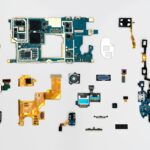
Importance of Troubleshooting Common Circuit Issues
Understanding the Basics of Circuit Troubleshooting
Troubleshooting circuit issues is a crucial skill for anyone handling electrical systems. Recognizing how a circuit operates allows one to identify problems efficiently. Think of troubleshooting as detective work; it's about how quickly one can diagnose and remedy a situation. Key fundamentals include the following:
- Familiarity with circuit diagrams.
- Knowledge of electrical components and their functions.
- Employing the right tools to test and analyze circuits.
Importance of Regular Maintenance
Regular maintenance can save time and money while ensuring reliability. For instance, I once avoided a significant outage by checking connections monthly. Consider the following maintenance tips:
- Inspect wiring for wear and tear.
- Check connections for corrosion.
- Test circuit breakers regularly.
In the long run, maintaining circuits circumspectly helps avert major failures, ensuring safety and system efficiency.
Identifying Common Circuit Issues
Overloaded Circuits
One of the most frequent issues faced in electrical systems is overloaded circuits. This occurs when too much current flows through a circuit, exceeding its designed capacity. Personally, I've experienced this during holiday gatherings when multiple appliances were used simultaneously, leading to tripped breakers. Signs of overloaded circuits include:
- Frequent tripping of circuit breakers.
- Flickering lights when devices are powered on.
- Warm or hot outlets.
Short Circuits
Short circuits are another significant concern, often resulting in immediate damage or fire hazards. They happen when electricity takes an unintended path, bypassing the load. A vivid memory is when my friend's home experienced a short circuit due to frayed wiring, causing sparks. Identifying short circuits can be simplified by observing:
- Sudden power outages in specific areas.
- The smell of burnt plastic.
- Hot spots on wiring or outlets.
By understanding these common issues, one can better prevent or address electrical concerns.

Tools Needed for Effective Troubleshooting
Multimeter
When it comes to troubleshooting circuit issues, a multimeter is an essential tool that every DIY enthusiast should have. I remember the first time I used one; it felt like unlocking a secret code to my electrical system. A multimeter allows users to measure:
- Voltage (V)
- Current (A)
- Resistance (Ω)
Using it correctly can pinpoint problems quickly and efficiently, making it invaluable in any toolbox.
Circuit Tester
Another handy tool is a circuit tester, which simplifies the process of checking for live voltage. I often use a circuit tester to ensure safety before starting repairs. The ease of use makes it perfect for quick checks:
- Just touch the probe to the wire or outlet.
- Look for indicator lights to confirm power.
Combining a multimeter and a circuit tester creates a robust approach to identifying circuit issues effectively.
Understanding Circuit Diagrams
Reading Circuit Diagrams
Understanding circuit diagrams is like learning a new language; once you get the hang of it, everything becomes clearer. When I first delved into electronics, deciphering these diagrams felt overwhelming. However, I soon realized that following a few basic rules made a world of difference. Key aspects to consider include:
- Symbols representing various components.
- Lines indicating connections and paths for current flow.
- Direction arrows for current flow and voltage sources.
Identifying Key Components
Once you grasp reading diagrams, the next step is identifying key components. This knowledge is critical for troubleshooting. Common elements include:
- Resistors (depicted as zigzag lines).
- Capacitors (shown as two parallel lines).
- Diodes (marked with a triangle and line).
Recognizing these symbols equips you to understand a circuit's functionality and diagnose problems effectively.
Steps to Troubleshoot Circuit Issues
Isolating the Problem
When troubleshooting circuit issues, the first step is isolating the problem. This process can be almost like detective work; you need to narrow down where the fault lies. I remember a time when my living room lights flickered frequently. Instead of overhauling the entire circuit, I systematically cut off individual circuits until I pinpointed the problem to a faulty light fixture. Here are some tips to help you:
- Turn off the main power before testing.
- Check each component individually.
- Observe symptoms carefully to identify patterns.
Testing and Troubleshooting Techniques
Once the problem is isolated, employ effective testing and troubleshooting techniques. Using a multimeter can be a game-changer. For example, I once saved a lot of time by verifying continuity with just a few probes. Consider these approaches:
- Measure voltage at various points.
- Inspect connections for corrosion or loosening.
- Test circuit breakers for functionality.
Being methodical not only speeds up the process but also ensures safety and accuracy in diagnosing circuit issues.
Safety Precautions During Circuit Troubleshooting
Importance of Proper Insulation
When troubleshooting circuit issues, safety must always come first. One crucial aspect is ensuring proper insulation. I recall a time when I got a mild shock from a bare wire. It was a wake-up call! Proper insulation prevents accidental electrical contact. Here are some reminders:
- Inspect wiring for any fraying or damage.
- Use insulated tools for repairs.
- Ensure all connections are well covered.
Proper Grounding Techniques
Equally important are proper grounding techniques. Grounding provides a safe pathway for excess electricity, reducing shock hazards. A neighbor of mine faced a scary situation when a storm caused a surge, but grounding saved the day. Consider these points:
- Check that all outlets are correctly grounded.
- Use grounding rods for outdoor circuits.
- Regularly inspect grounding systems for integrity.
Troubleshooting Common Circuit Issues: Tips and Tricks
Incorporating safety measures and techniques leads to more efficient troubleshooting. Always remember to work with the power off, and don’t hesitate to seek professional help when needed to ensure both safety and effectiveness in resolving circuit issues.





